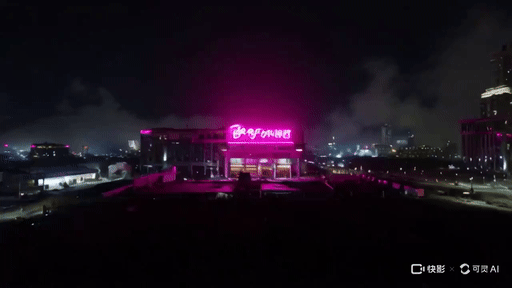
Kling AI hit the headlines when it was released last month, offering high-quality generative video content with qualities similar to those from OpenAI's yet-to-be-released Sora. Initially, it was only available in China and required a Chinese phone number — but now it's gone global.
Developed by the Chinese tech giant Kuaishou Technology, the Kling model can generate videos up to two minutes long at HD resolution. It uses advanced 3D reconstruction technology to create more natural movements for people and animals.
Writing on X, the Kling team announced the international version where each generation requires 10 credits and you get 66 per day. A subscription tier is coming soon.
What is Kling and why is this a big deal?
🎉 The moment we've all been waiting for is HERE! 🎊Introducing the official global launch of Kling AI's International Version1.0!🌍📧ANY email address gets you in,no mobile number required!👉 Direct link:https://t.co/68WvKSDuBg 🔥Daily login grants 66 free Credits for… pic.twitter.com/TgFZIwInPgJuly 24, 2024
Artificial intelligence video generation is a rapidly changing and growing field, with Runway unleashing improved realism and 10-second clip generation in Gen-3 earlier this month, Luma Labs unveiling the impressive Dream Machine last month and improvements to Haiper.
As OpenAI currently only allows a small number of handpicked creators to access Sora — Kling may be king.
These new model updates were driven initially by OpenAI’s unveiling of Sora earlier this year which still stands out as the best content generation, with a host of new short films recently unveiled on YouTube to show its full potential — but Kling also contributed to the update rush.
Kling AI takes a slightly different approach to AI, utilizing generative 3D in the creation process and offering Sora-level scene changes, clip lengths and video resolution. As OpenAI currently only allows a small number of handpicked creators to access Sora — Kling may be king.
The ability to generate clips up to two minutes long will also be significant as OpenAI says Sora caps out at about one minute per generation and each one takes 15 or more minutes.
However, what OpenAI can take some comfort in is the fact the global release currently only allows a 5-second initial clip creation and it takes a long time per clip. So, unless Kling upgrades quickly Sora still stands a good chance if it comes to market in the coming months.
How do I get access to Kling?

There are two ways to access Kling. The most powerful and feature-rich version is only available in China and requires a Chinese phone number. While there are services that you can use to get one, they are unreliable and I wouldn’t recommend it.
The other way is to accept the limitations of the global version, which will catch up with the Chinese release fairly quickly. In this case, just visit KlingAI.com, sign in with an email address and get started making videos.
It is an easy-to-use interface, offering text-to-video or text-to-image and, unlike Runway, Haiper and Luma Labs you can enter prompts up to 2,000 characters long so can get very descriptive. It seems to work better with a long and well-thought-out prompt.
One thing to note: it is slow. I was able to write this entire article, have it edited, put into the content management system and published faster than it took to generate the first five-second video. This could be because everyone was flocking to try it out as Dream Machine was similarly slow in its initial release.
Final thoughts

Kling’s global release is a good thing for the AI video market as competition seems to be working to push others to update and release new models more quickly.
In the end, all of the AI video tools will end up at a similar quality level as they all strive to create 'open world' AI platforms where the underlying model has an understanding of the real world.
It will come down to additional services, speed of generation and most importantly, pricing.







